-
1801
On 13th June, at 7 o’clock in the evening, Emanuel Schikaneder opens the Theater an der Wien as the “Playhouse of imperial and royal privilege” with his own work, the allegorical gala prologue Thespis Traum, and the heroic opera Alexander by Franz Teyber. The theatre’s façade is ochre with Empire style windows while the interior is decorated in blue and silver, the colours red and gold being reserved for the imperial court. It is “more spacious than any in Vienna”, with a capacity of almost 2,000. “Schikaneder is abroad in Vienna’s suburbs where he has built a truly splendid building with furnishings that many an impresario could and should gainfully visit…” (Johann Gottfried Seume on his Spaziergang nach Syracus (Promenade to Syracuse), October 1801).
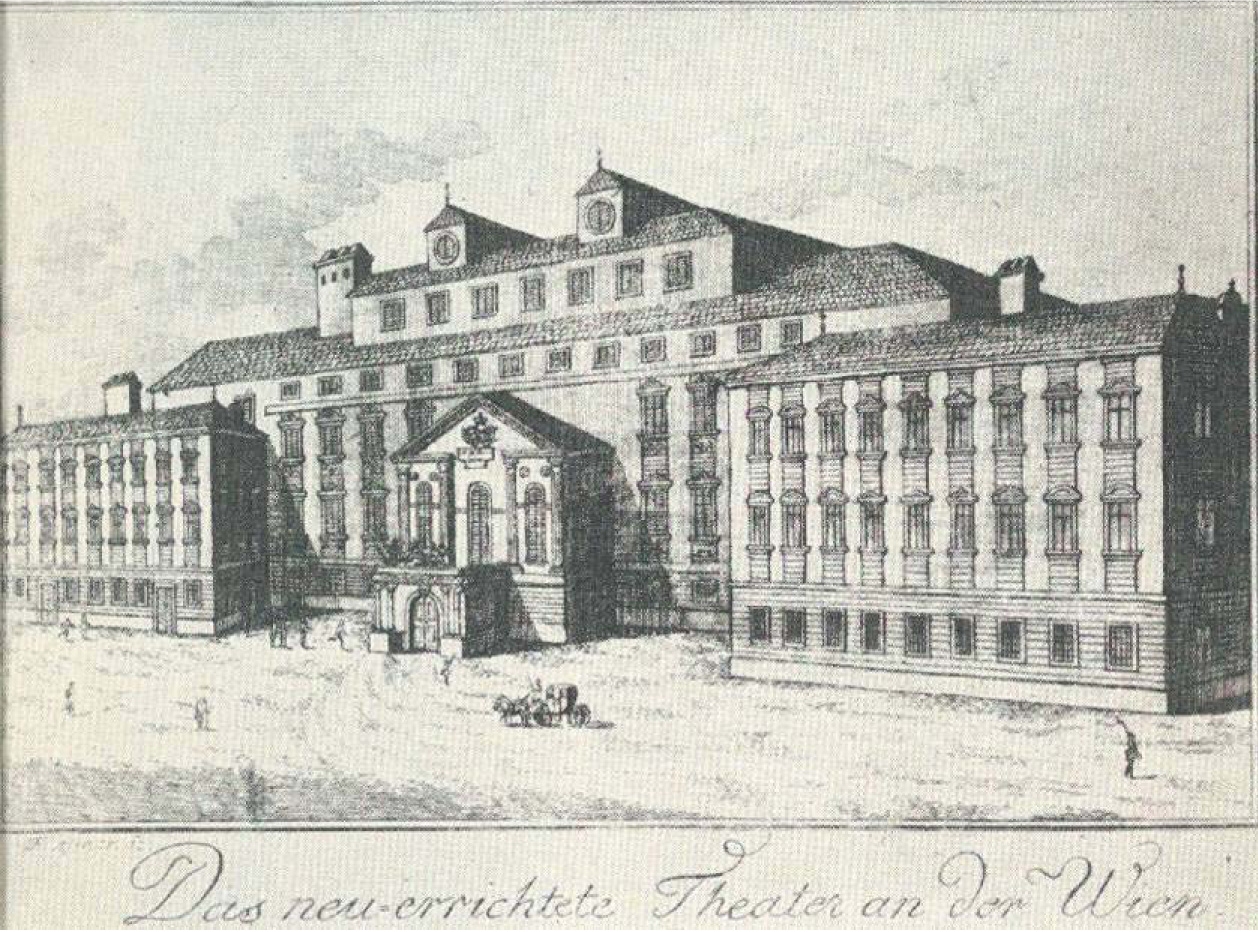
-
1803
After only two years the patron and his impresario have fallen out and gone bankrupt. Schikaneder is forced to sell the theatre to his bitterest enemy, Peter Freiherr von Braun. However, being in possession of the imperial privilege (as shown by the eagle over the Papageno gate that is still visible today) he retains the post of artistic director and appoints Ludwig van Beethoven director of music and resident composer. On 3rd April 1803 Beethoven’s oratorio Christ on the Mount of Olives, his 2nd Symphony and his piano concerto in C minor are premiered in an “academy”.
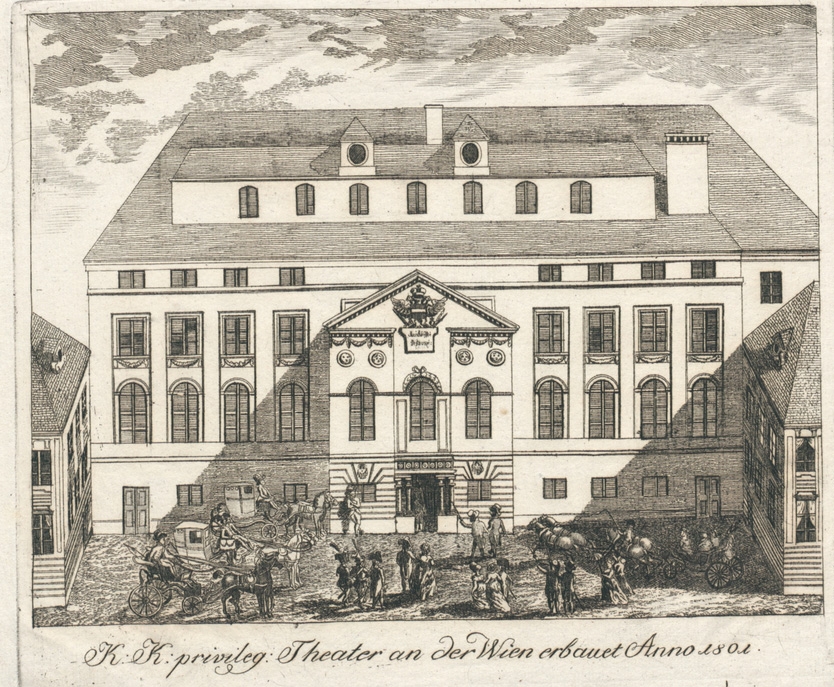
-
1805
Beethoven’s Fidelio, Eroica and many of his other orchestral works are premiered in the Theater an der Wien, sometimes with Beethoven conducting, sometimes with him as pianist.
-
1810
Under the direction of the "Gesellschaft der Cavaliere" (Society of Cavaliers) the frequently changing programme, a motley collection of music theatre, comedy, “academy” (concerts) and tragedy, is given a new facet by the addition of fashionable plays about knights and chivalry, beginning on 17th March 1810 with the premiere of Heinrich von Kleist’s Das Käthchen von Heilbronn.
-
1812
Schikaneder dies in abject poverty and isolation. However, his spirit lives on in his theatre where performances prevail that feature truly spectacular effects, such as tales of sorcery and chivalry with jousting, sword fights and burning castles. One such production is Friedrich von Schiller’s tragedy The Maid of Orleans which requires more than 400 people and 80 horses on stage at once. From 1815 to 1821 “Count Palffy’s children’s ballets” are the star attraction and produce, among others, the dancer Fanny Elssler who later achieves worldwide fame.
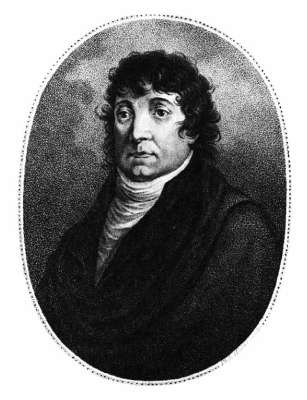
-
1817
Gioacchino Rossini’s operas send a wave of genuine hysteria through Vienna. With the premiere of Franz Grillparzer’s Die Ahnfrau (The Ancestress) a considerable amount of the Austrian classicism that was to survive for two centuries also leaves its mark on the Theater an der Wien.
-
1818
Ferdinand Raimund performs at the Theater an der Wien for the first time. In 1827 his fairy-tale drama Moisasurs Zauberfluch (The Magic Curse of Moisasur) is premiered, before Johann Nestroy dominates for the next 20 years. Both are commemorated on the iron curtain next to The Magic Flute.
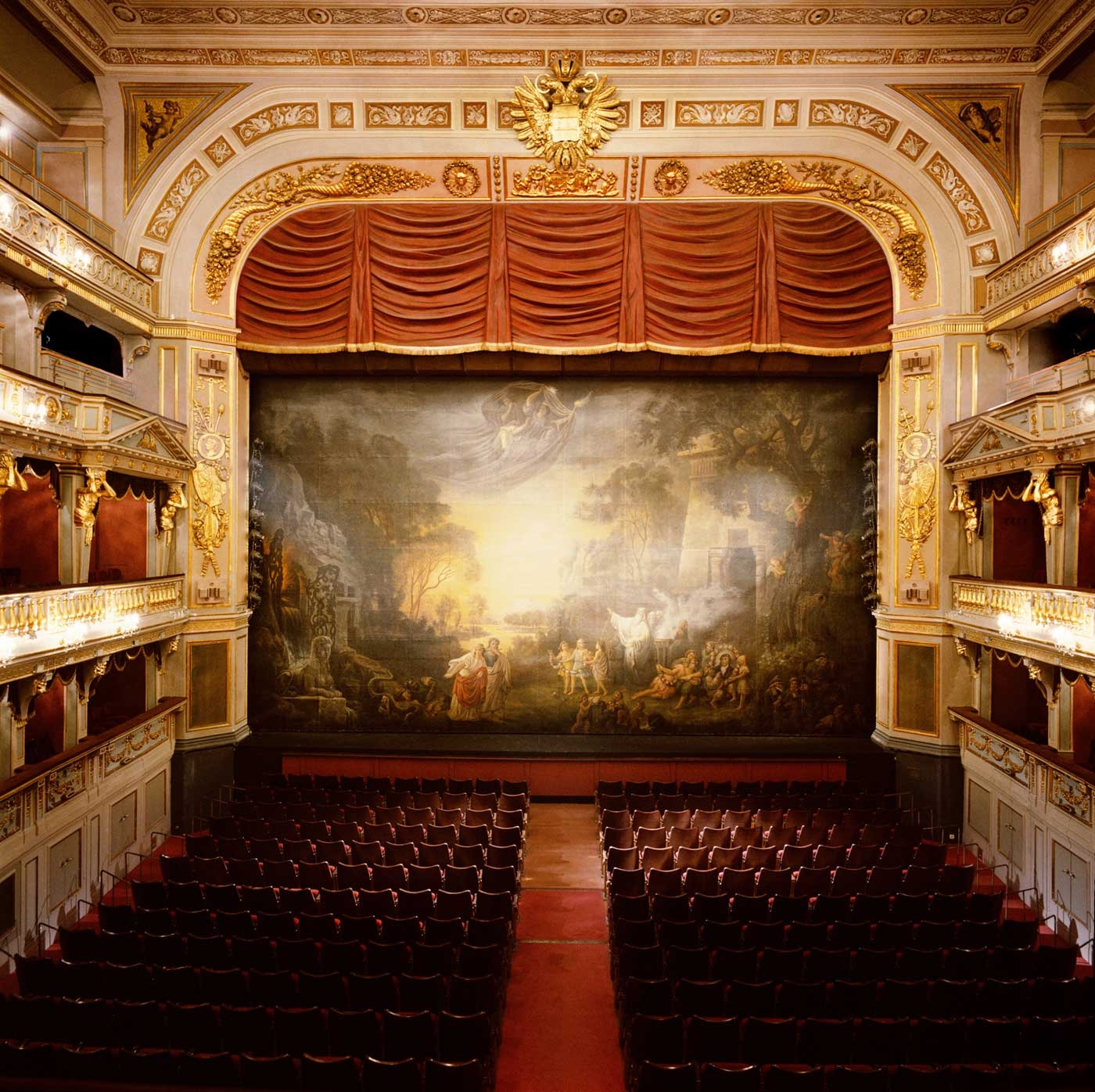
-
1820
In August the Theater an der Wien is raffled for the first time because the takings are too low to guarantee the financing of further productions. Raffles subsequently provide a source of income for the leaseholders on a number of occasions, although the winners prefer to take their prizes in cash rather than assume responsibility for the theatre! The premiere of Franz Schubert’s opera The Magic Harp and his music for the romantic tragedy Rosamunde show that music theatre and drama are also embracing every new development.

-
1825
The theatre, now heavily in debt, is taken over by Karl Carl from Munich who, as “Staberl”, quickly wins over the hearts of the Viennese. Comedy spectacles and plays about knights and chivalry draw the crowds while the new impresario treats his actors like extras – and pays them accordingly! In 1827 he also takes over management of the Theater in der Josefstadt and this brings him a new leading man: Wenzel Scholz, the chubby comedian, who is justifiably immortalized on the iron curtain beside Nestroy and Raimund.
-
1830
The actress Therese Krones and Johann Nestroy join the company at the Theater an der Wien. The ensuing years see a number a successful premieres of Nestroy’s works in which he always plays one of the leading roles and holds up a mirror to contemporary society: Lumpazivagabundus in 1833, Upstairs, Downstairs (Zu ebener Erde und erster Stock) in 1835, Das Haus der Temperamente in 1837, Der Talisman in 1840, Das Mädl aus der Vorstadt in 1841, Einen Jux will er sich machen in 1842, Liebesgeschichten und Heiratssachen in 1843 and Der Zerrissene in 1844.
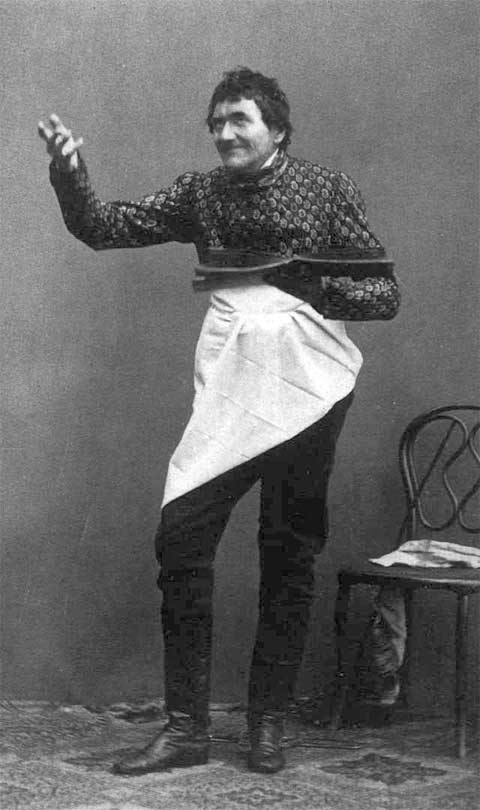
-
1845
Following a "hostile takeover" (a benefactor paid the theatre’s debts) ownership of the Theater an der Wien passes to Franz Pokorny and the director Karl Carl is forced to move out along with his company. Pokorny’s intention is to stage mainly operas, but despite a sensational season of guest performances by Jenny Lind, the "Swedish nightingale", he rapidly goes bankrupt. After the upheavals of the revolution in 1848 and Pokorny’s death his son Alois assumes responsibility for the theatre, though his period in charge is no more successful than his father’s was. In 1860 the resident composer Franz von Suppé composes Das Pensionat (The Finishing School), the first operetta in Viennese style.
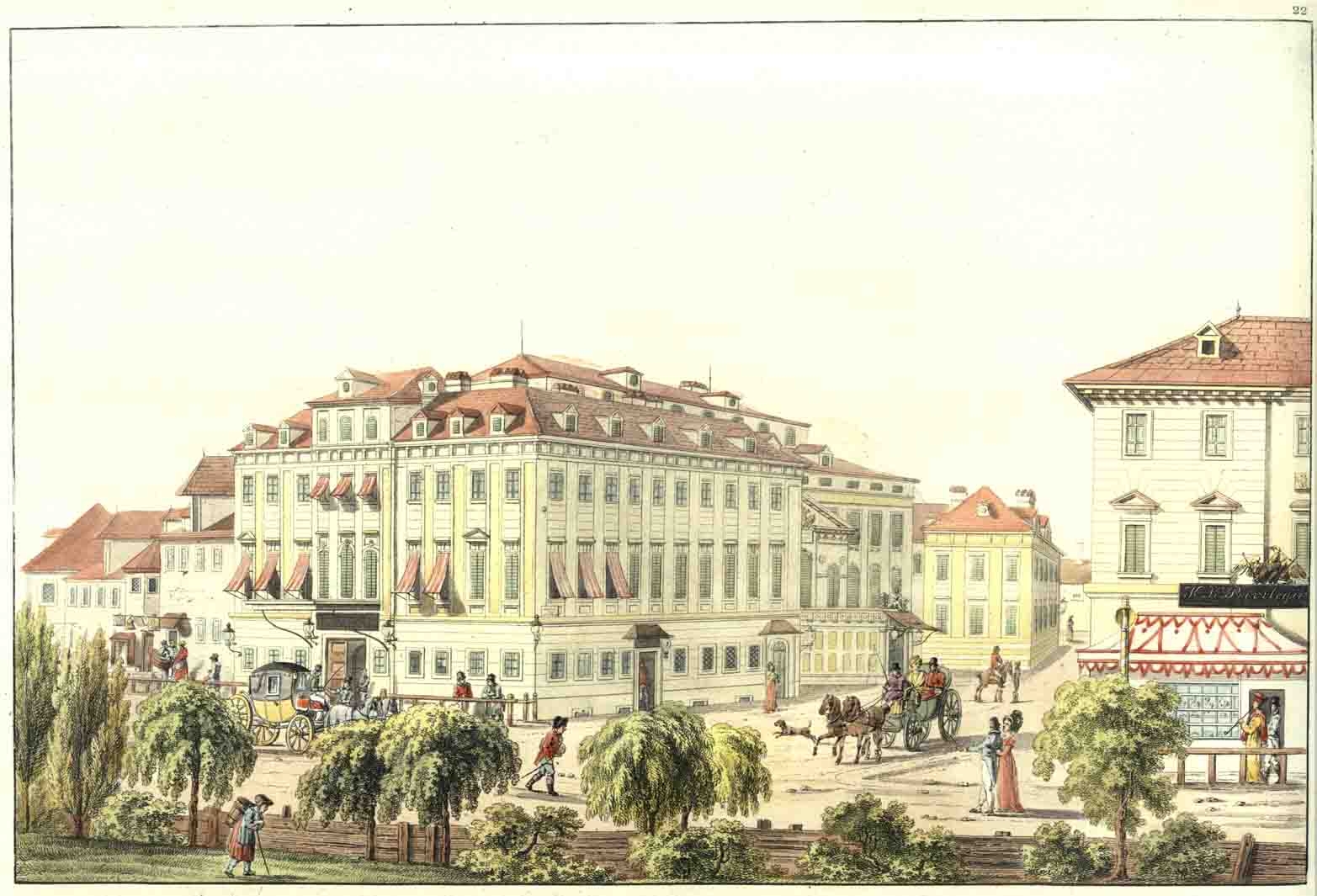
-
1862
With the arrival of Friedrich Stampfer as director of the theatre, operetta rapidly gains popularity. The resident diva Josefine Gallmeyer, attractive, pert and vivacious, introduces the cancan to Vienna. Marie Geistinger, her strongest rival, is responsible for ensuring that the success enjoyed in Paris by Offenbach’s works La Belle Hélène and The Grand Duchess of Gerolstein is continued at the Theater an der Wien.
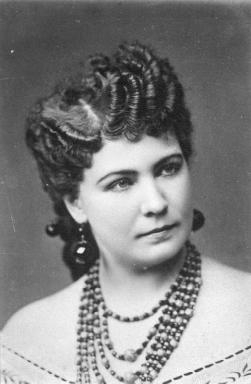
-
1874
This year not only sees Alexander Girardi’s first performance at the Theater an der Wien, it also marks the beginning of the "golden age of Viennese operetta", ushered in on 5th April by the premiere of Johann Strauss’ Die Fledermaus. For years to come it is the operettas of Johann Strauss (The Gypsy Baron, 1885), Carl Zeller (Der Vogelhändler, 1891) and Carl Millöcker (The Beggar Student, 1882) that quench the thirst for entertainment of first the Viennese and soon after the whole world with unparalleled charm and music of the very highest quality.
-
1900
The Biedermeier-style portal with the address "an der Laimgruben 26" is replaced by a residential building in turn-of-the-century style. Later on the cellar of this building will house the cabaret known as Die Hölle (hell), and the denizens of the theatre still refer to his room, which today serves as a bar and buffet where patrons can relax during the interval, by this name. Besides cabaret, evening song recitals and comedies small operettas are premiered here too, among them Fall’s Brüderlein fein and Lehár’s Frühling (Spring).
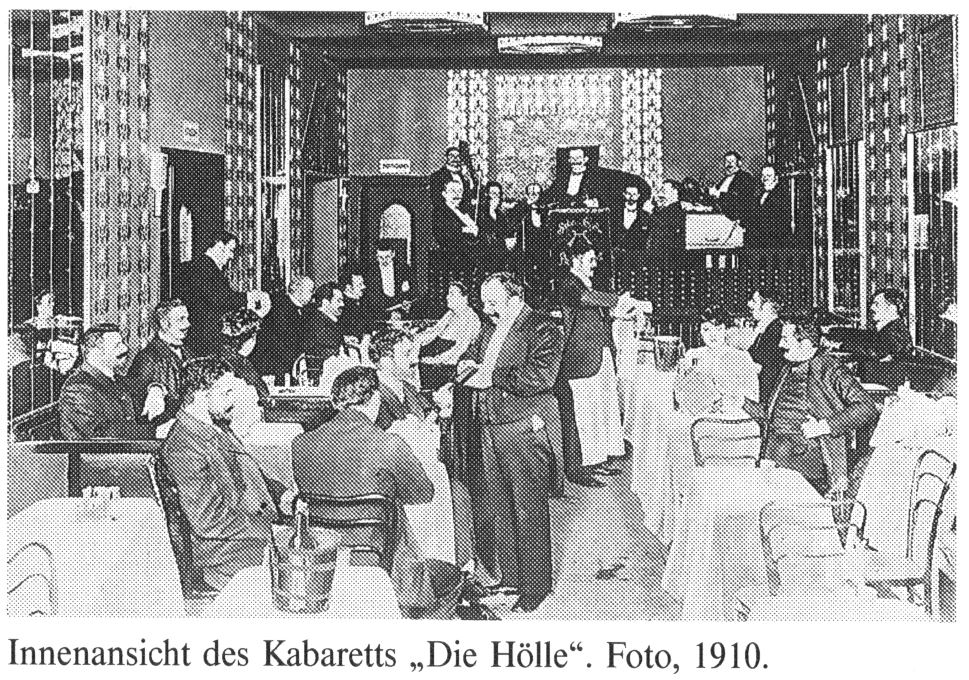
-
1905
With The Merry Widow by Franz Lehár a second successful era begins, the "silver era of Viennese operetta". Besides Lehár the chief protagonists of this era are Emmerich Kálmán, Edmund Eysler, Leo Fall, Bruno Granichstädten and, later on, Ralph Benatzky and Paul Abraham. The special style so characteristic of the Theater an der Wien - top-class entertainment coupled with artistic quality - is maintained for nearly forty years by the director Wilhelm Karczag and his successor and son-in-law Hubert Marischka.
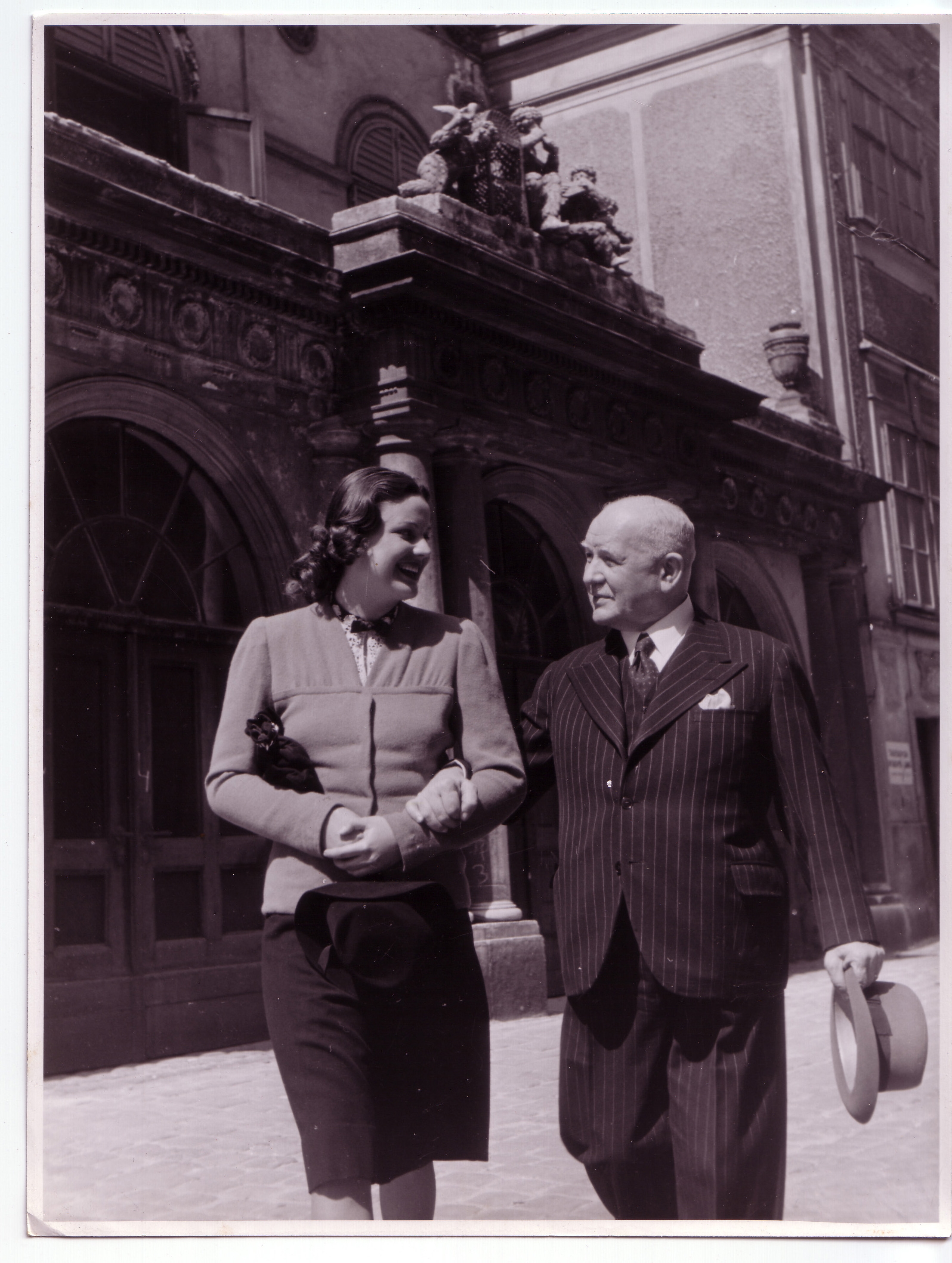
-
1923
Franz Lehár’s Die gelbe Jacke (The Yellow Jacket) is premiered at the theatre and returns in 1930 with Richard Tauber as The Land of Smiles.
-
1932
One last highlight: Sissy, with music by the violinist Fritz Kreisler and with Paula Wessely in the title role, becomes a serial success. 20 years later Hubert Marischka’s brother Ernst will take the same story as the basis of the legendary film Sissi with Romy Schneider in the title role.
-
1936
With Ralph Benatzky’s Axel an der Himmelstür starring Zarah Leander a long era comes to an end. In the ensuing years the cinema takes over many of the roles previously played by the theatre. The Theater an der Wien is closed before Austria’s annexation to the German Reich in 1938 and languishes unused apart from some events organized by "Kraft durch Freude" (the KdF, literally "strength through joy", a state-controlled leisure organization in the Third Reich), surviving World War II unscathed.
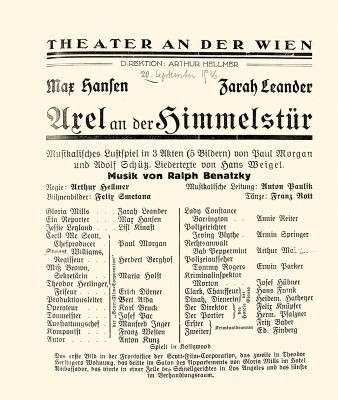
-
1945
The theatre is reopened on 6th October with a performance of Fidelio by the company of the Vienna State Opera and the Vienna Philharmonic conducted by Josef Krips. In the course of five productions (The Marriage of Figaro in 1945, Don Giovanni and The Abduction from the Seraglio in 1946, Così fan tutte in 1947 and finally The Magic Flute in 1948) the legendary “Viennese Mozart style” develops under very specific conditions.
-
1951
Coinciding with its 150th anniversary the Theater an der Wien, thanks to its extensive repertoire and the engagement of the greatest conductors of the time (Karl Böhm, Hans Knappertsbusch and Clemens Kraus) has attained the status of one of the most important opera houses in Europe.
-
1955
The State Opera moves into its reconstructed building on the Ringstrasse. Plans are being considered to replace the Theater an der Wien with a large car park or a department store. Fortunately the theatre is not only maintained as a venue for the Vienna Festival, the Wiener Festwochen, it is also lovingly restored and provided with first-class equipment.
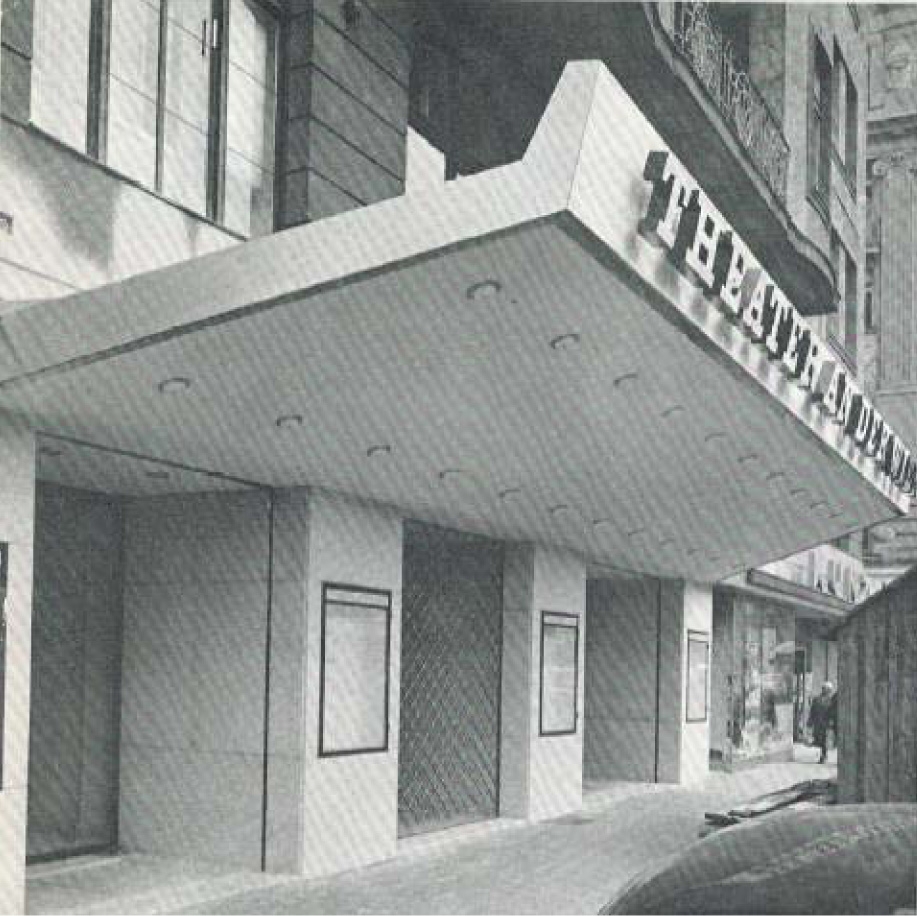
-
1962
In a ceremony on 28th May the theatre is opened by Austria’s president Adolf Schärf as a venue for the Wiener Festwochen. The opening performance follows two days later with Mozart’s The Magic Flute conducted by Herbert von Karajan.
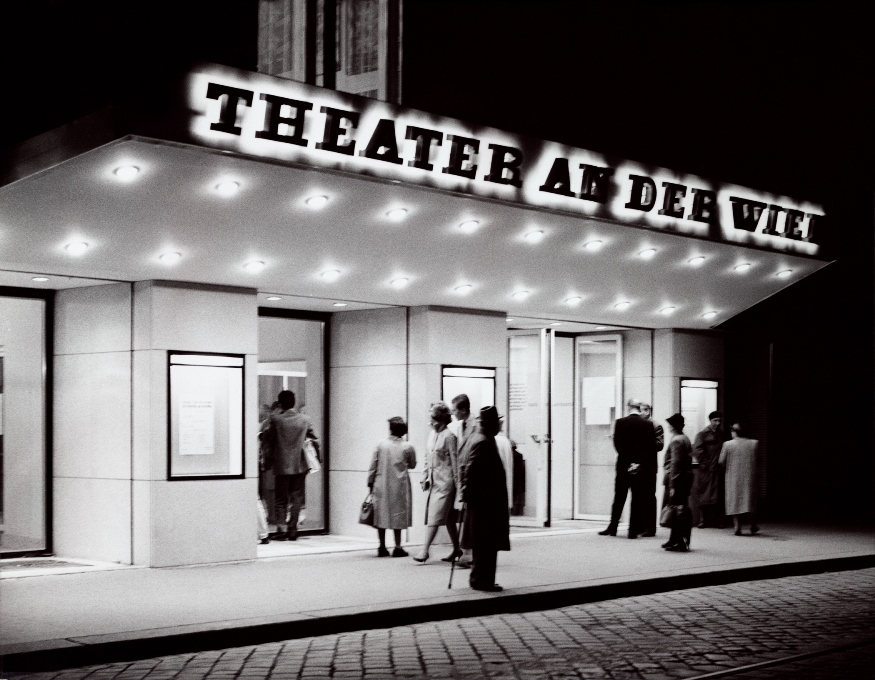
-
1964
On 14th June The Last Days of Mankind by Karl Kraus is premiered at the Theater an der Wien.
-
1965
Under the aegis of impresario Rolf Kutschera the latest musical hits from Broadway are performed in German by the theatre’s own company. These include Anatevka, The Man of La Mancha, Zorba, Evita and Jesus Christ Superstar, each presented in several runs of 50 to 70 performances.
-
1967
The Merry Widow is included in the programme as a summer operetta (initially with Johannes Heesters) and is performed every year for the next 13 years. The Italian star tenor Giuseppe di Stefano appears as a guest performer in Lehár’s The Land of Smiles and enjoys huge success.
-
1972
Helden, Helden (music: Udo Jürgens) becomes the theatre’s first self-penned musical. Two more follow: Das Glas Wasser in 1977 and Die Gräfin vom Naschmarkt in 1978.
-
1983
Cats begins Peter Weck’s era as director and becomes the first long-running success on the continent. It is followed by The Phantom of the Opera and Freudiana.
-
1992
In September the acclaimed opera director Harry Kupfer stages the premiere of the musical Elisabeth.
-
1999
After restoration work and a technical overhaul the musical Mozart! by Michael Kunze and Sylvester Levay is premiered, again under the direction of Harry Kupfer.
-
2005
With the last performance of Elisabeth on 4th December the era of musicals at the Theater an der Wien draws to a close. Under its new director Roland Geyer it is to become the City of Vienna’s new opera house from January 2006.
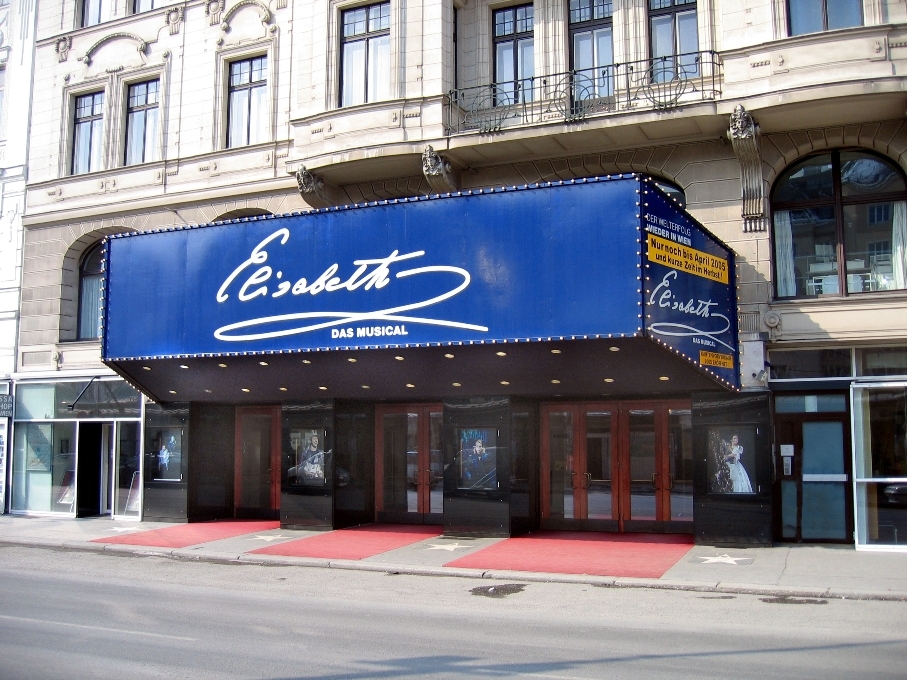
-
2006
In the first years, it is the "three Ms" that form the backbone of the programme: Monteverdi – Mozart – modern. Works from the 17th and 18th centuries are brought to life chiefly by ensembles specialising in historical performance practice, and a consequence of this is that the baroque opera repertoire is rediscovered for Vienna. In addition to the staged performances of these operas, concert renditions of well-known and unknown operas of this era that deserve to be rediscovered complete the programme. Contemporary musical theatre is regularly promoted by the commissioning of works from established and young composers. The operas are presented under the "stagione" system, with a premiere or a new opera production added to the programme every month.
The main sponsor is AGRANA whose generous support helps the opera house get under way.
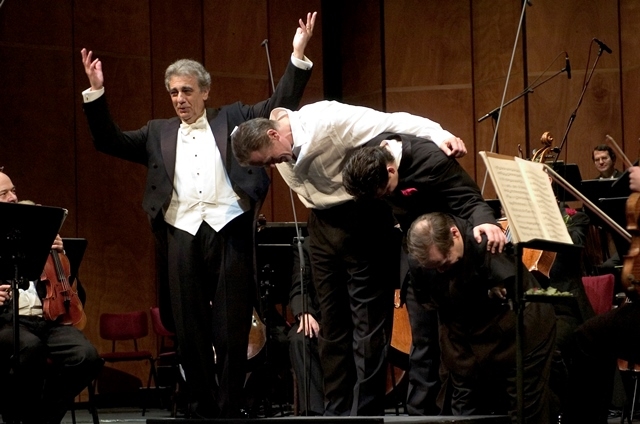
-
2007
The society Friends of the Theater an der Wien is founded to support the opera house's work. The society aims to promote the theatre’s principal activities, thus underlining its status as an exceptional cultural institution, and to provide financial support to the very successful educational work done for young people by Jugend an der Wien.
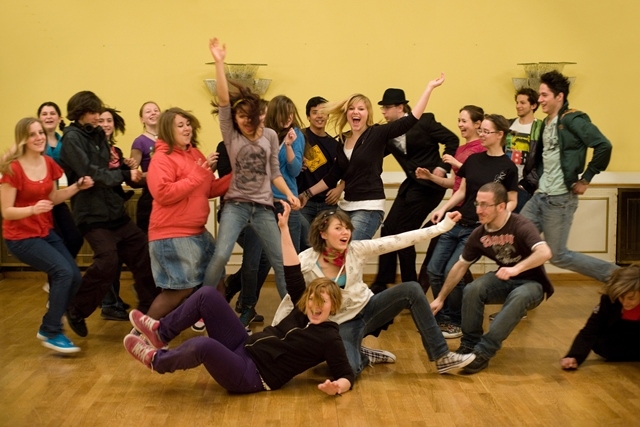
Jugend an der Wien is the name of the Theater an der Wien's educational programme that has been steadily growing since 2007 and now includes the opera house's school projects, closely linked to the productions, and performances for schools in the Kammeroper. In individual workshops, school classes can prepare themselves for the productions and discuss the social relevance of the themes and the production itself. The Jugend macht Oper section gives young people between the ages of 14 and 21 the chance to perform on stage themselves, or play in the orchestra pit. The adrenaline kicks in when, every year in spring, the curtain rises on the performances of the youth opera on the Theater an der Wien's large stage.
-
2008
With its summer series "Operimsommer" the Theater an der Wien is the only Viennese opera house that meets the shortage of cultural activity in the city in the months of July and August. The Spanish zarzuela Luisa Fernanda with the international star Plácido Domingo and Mozart's Magic Flute under the exceptional direction of Achim Freyer give the Theater an der Wien a fine success with a total of 10,500 tickets sold. This amounts to 98.7% of all available seats and confirms that there is still great interest in the Theater an der Wien as an opera house in the summer, too.
-
2009
September marks the first time that the Theater an der Wien is ranked second in the critics' survey run by the magazine Opernwelt to find the "opera house of the year". Director Roland Geyer and his team are delighted at this accolade, since it recognises the work done in the past three years to establish the theatre's identity as an opera house. This ranking confirms both the artistic quality of the opera house and its innovative stagione system.
-
2010
For the first time in the new millennium, a historical revue, Tanz der Blinden, takes place in the large lounge, the Hölle. Under director Georg Wacks, the legendary era of literary-musical cabaret is brought back to life that flourished in these very rooms from 1906 to 1930. Such was the success that a new revue is staged every year thereafter.
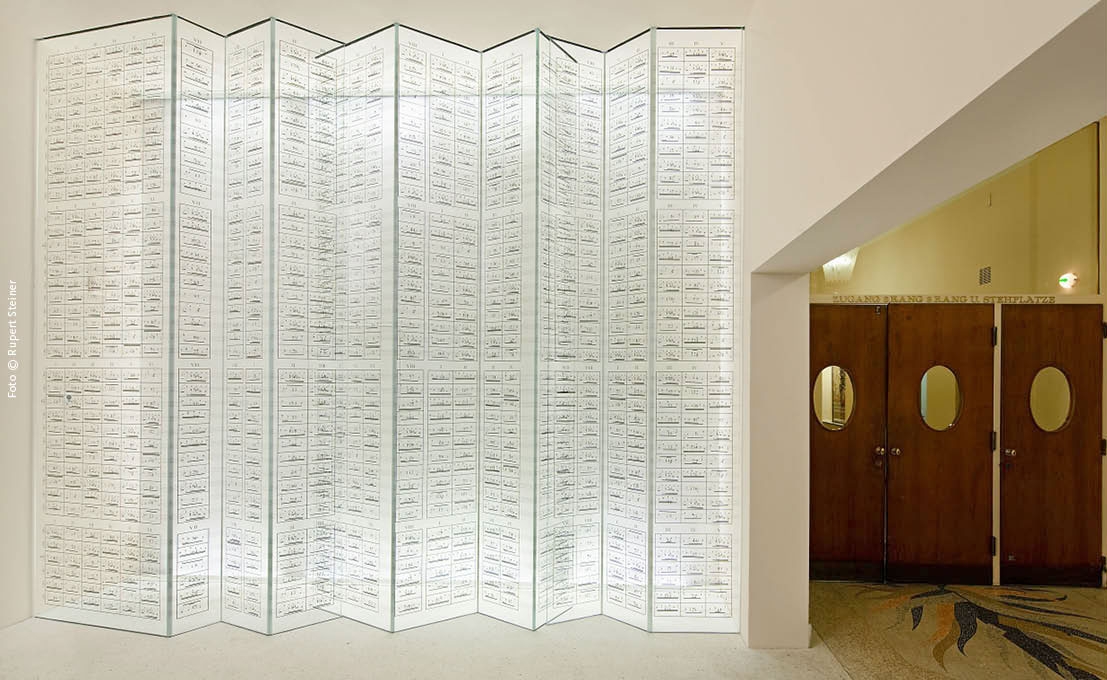
As the result of a competition and experts' discussions launched in 2006 for the reopening of the Theater an der Wien as the City of Vienna's new opera house, the newly designed foyer was officially opened: the project by the media artist VALIE EXPORT and the architect Golmar Kempinger-Khatibi comprises the redesign of the facade including a new canopy and VALIE EXPORT's installation "Anagrammatische Komposition mit Würfelspiel (nach W.A. Mozart)" ("Anagrammatic Composition with Dice after W. A. Mozart)" next to the ticket office in the Theater an der Wien's foyer.
-
2011
The Theater an der Wien and its main sponsor AGRANA continue their partnership. Beginning with the 2011/12 opera season, the cooperation that started with the reopening of the Theater an der Wien as an opera house in 2006 is renewed for a further three years. This means that AGRANA accompanies the Theater an der Wien into its sixth season. This decision underlines the sugar, starch and fruit company's position as a long-term sponsor of culture.
-
2012
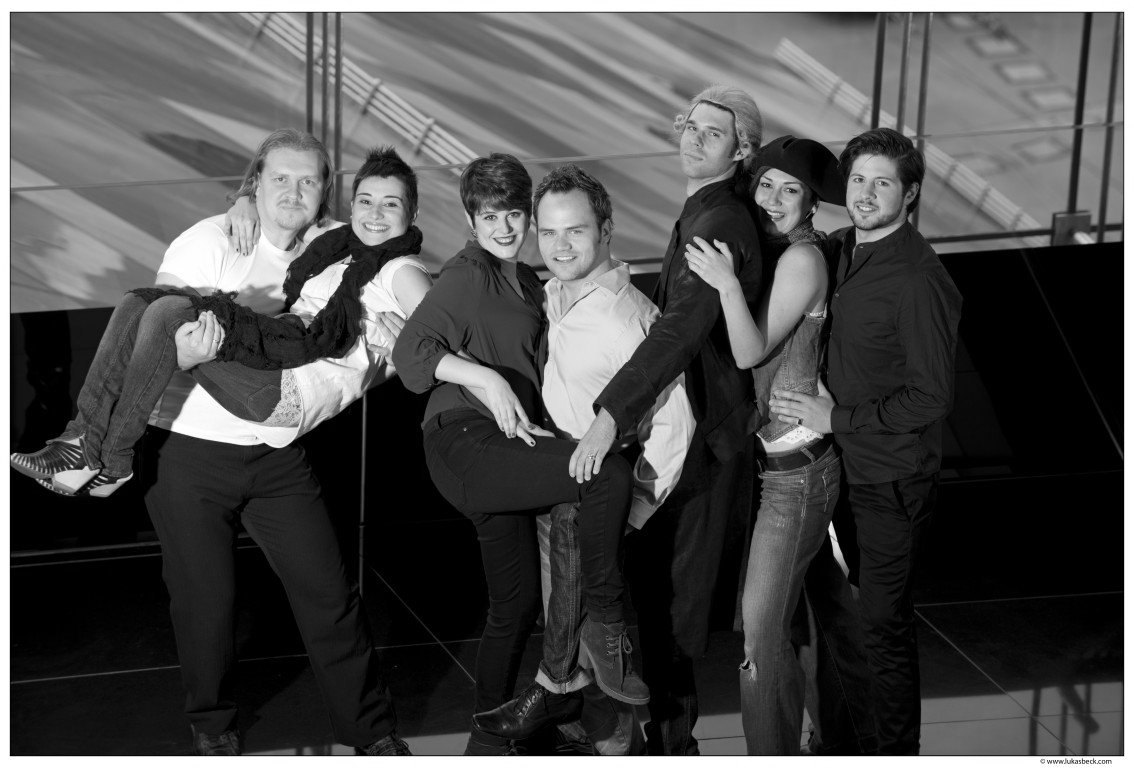
From September 2012, the Theater an der Wien also stages productions at the Kammeroper. To this end, a young ensemble is founded that performs for two years on the small but versatile stage at no. 24, Fleischmarkt, and also takes on small roles at the Theater an der Wien. The programme at the Kammeroper consists of rarities and classics on a smaller scale which enable our young singers to acquire a wide repertoire.
-
2013
On 13 October the opera A Harlot’s Progress by the British composer Iain Bell receives its premiere and on 24 October a performance of a contemporary opera is broadcast worldwide from the Theater an der Wien as a live stream for the first time ever. From that point on, a third of the new productions at the Theater an der Wien and the Kammeroper are made available to a wider audience via live stream.
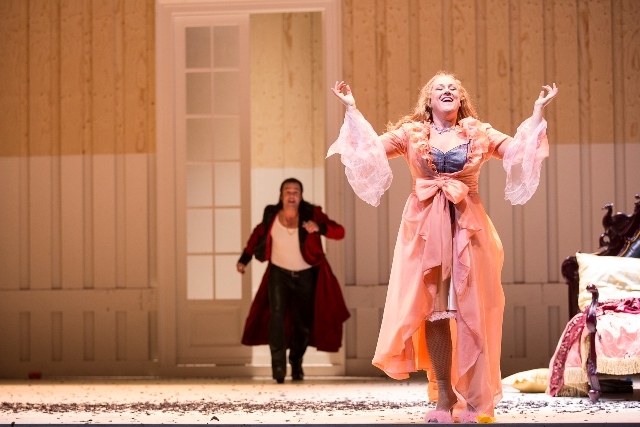
-
2014

From 6 to 29 March, a Mozart/Da Ponte cycle is presented by artists of the highest calibre under the musical direction of Nikolaus Harnoncourt whose interpretations define the character of the Theater an der Wien from 2006 like no other. With his Concentus Musicus Wien and an ensemble combining established and young singers, Harnoncourt leads audiences and critics alike to a rediscovery of the Mozart operas Le nozze di Figaro, Don Giovanni and Così fan tutte. Many people already describe these consummate performances as the final musical legacy of Nikolaus Harnoncourt (1929–2016).
-
2015
At a press conference launching the tenth anniversary celebrations of the Theater an der Wien as the City of Vienna's new opera house, Vienna's mayor Dr. Michael Häupl says: "With the reopening of the historic Theater an der Wien as a modern stagione opera house in 2006 a vision became reality. In my opening address in 2006 I stressed the City of Vienna's commitment to this new opera house, words that, after ten successful years, I can only emphasise again today. Director Roland Geyer and Director General Thomas Drozda have also succeeded in securing the Theater an der Wien an international reputation, and that strengthens Vienna's position as an important city of culture in Europe... "
-
2016
The first ten years as a "new opera house" are marked by two gala concerts of Beethoven's Fidelio and Mozart's Idomeneo and a staged anniversary production of Brecht and Weill's The Threepenny Opera. The latter is the 101st premiere of a stage work.
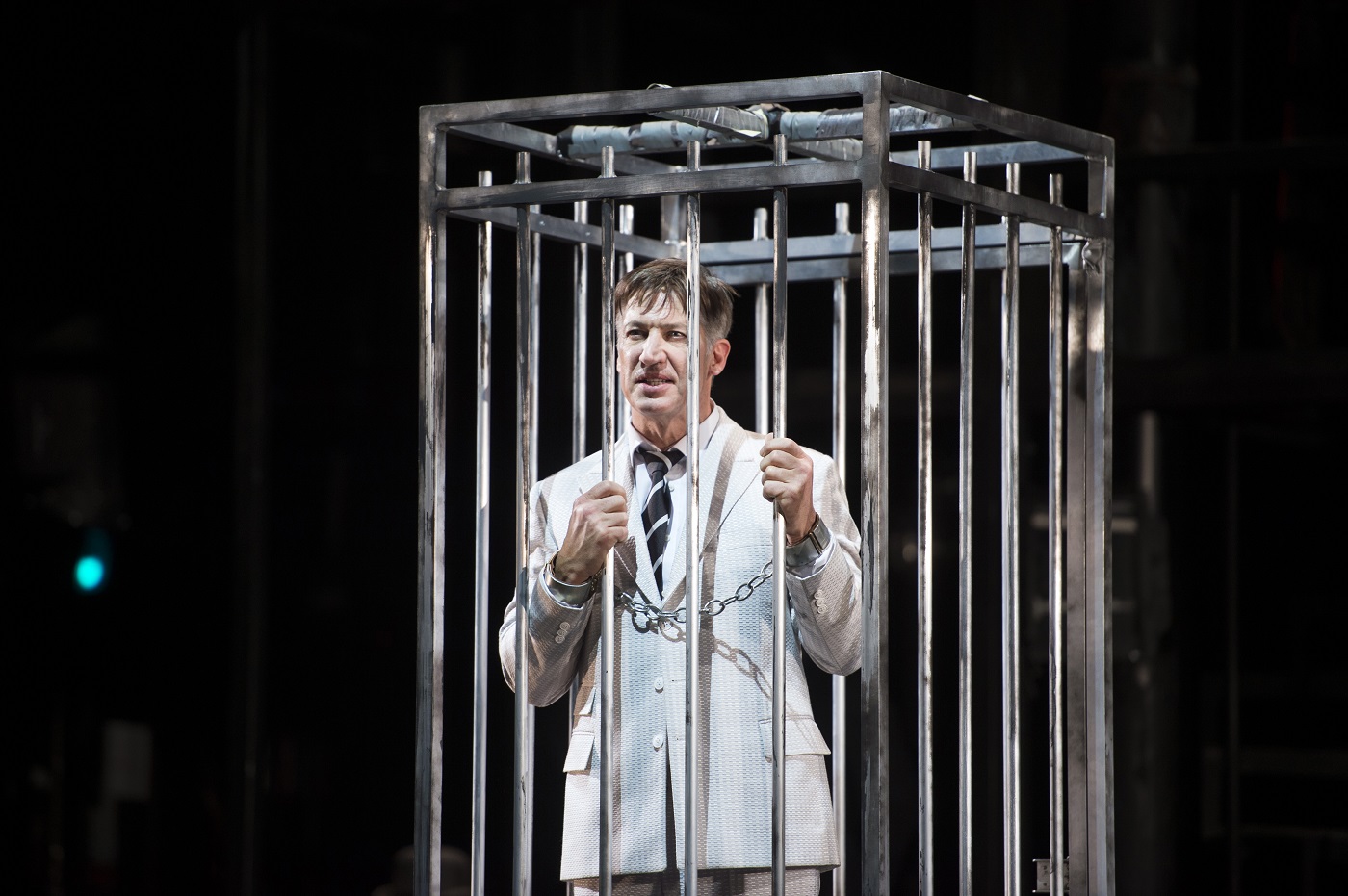
-
2017
The season 17/18 opens with a new production of Mozart's Zauberflöte under the musical direction of René Jacobs and staged by Torsten Fischer. In October, Berg's Wozzeck celebrates its premiere with Florian Boesch in the title role in a production by Robert Carsen. Richard Wagner's Ring will be the focus of the new opera world in December: director Tatjana Gürbaca, dramaturge Bettina Auer and conductor Constantin Trinks are working on a special version of the Ring for the Theater an der Wien on three evenings, which will form a closed trilogy.
-
2018
For the next four years of his artistic directorship, Roland Geyer has developed a programme concept that builds on the insights gained from the playbills of the past twelve seasons and takes them as a starting point for something new. Inspired by the graphic Im Morgengrauen by the Viennese painter Herwig Zens, the next four seasons are to be designed as a daily schedule: 2018 begins A priori "Im Morgengrau", the middle of the day in 2019 is themed "In medias res" and the eve in 2020 shows De Facto what is possible on a stage and in life, before the fourth season concludes in the evening Summa summarum.

-
2019
From now on, active cultural education will not only be offered with and for young people and children, but for the first time for all opera-loving people from 9 to 99 years.
The workshops were aimed at all those who have always wanted to be on stage and who wanted to actively and creatively try out an opera house. -
2020
The year 2020 is all about Ludwig van Beethoven, to whom an extensive anniversary program is dedicated on the occasion of his 250th birthday. As early as March, the Corona pandemic puts an early end to the Beethoven celebrations: many events have to be canceled or postponed. Beethoven's masterpiece Fidelio, which was to be the highlight of the year in the production of Oscar winner Christoph Waltz, does not find its way into a live performance, but can be captured for the public as a film production. The TV premiere on ORF 2 on March 20, 2020 reaches 376,000 viewers* and a market share of 11%. Afterwards it is quiet for a long time in the Theater an der Wien. Lockdown. Play cannot resume until the start of the new season in September.
Monika Rittershaus.jpg)
-
2021
The year 2021 begins in the middle of the second lockdown and, as in the months before, the Theater an der Wien records all opera productions that cannot take place in the theater for television, streaming and DVD. This is because an important part of communication during the closure is maintaining contact with audiences via digital offerings.
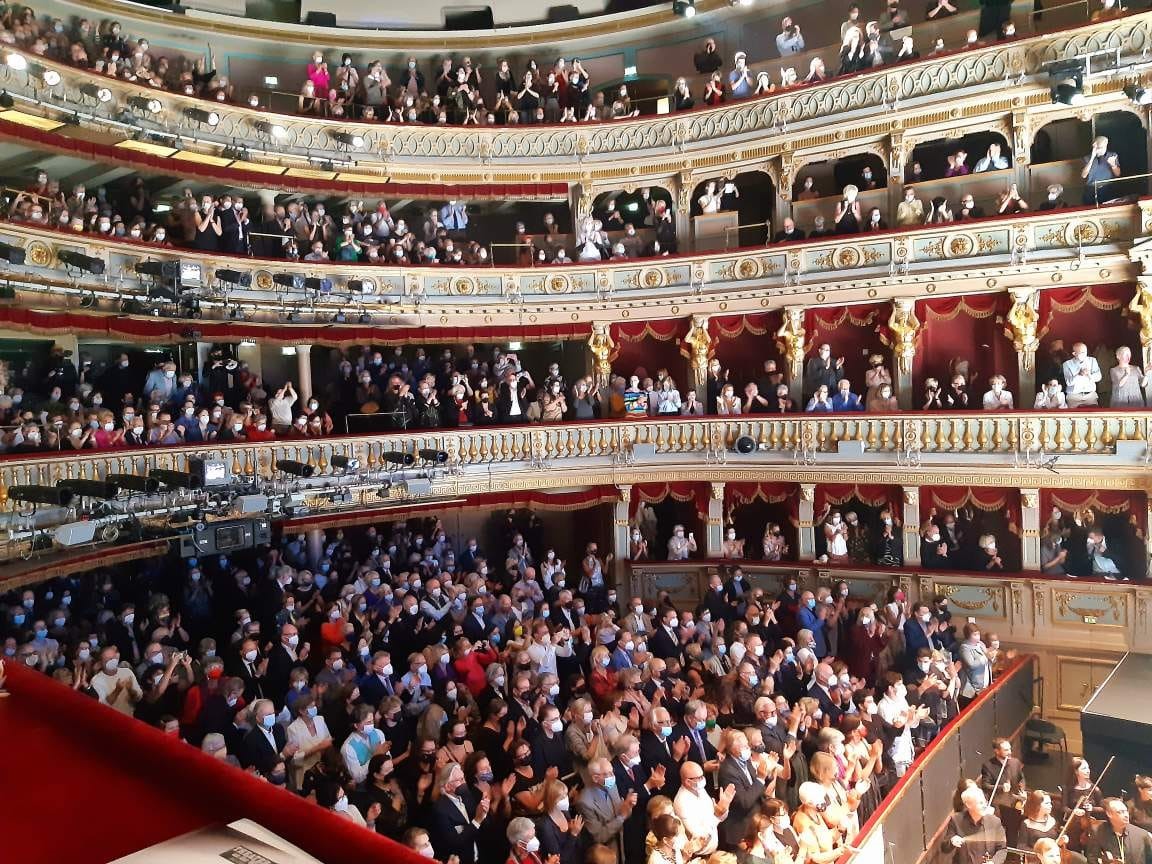
For the opening of the season 21/22, the theater can be pleased about two sold-out evenings with 100% hall occupancy. It is a very special moment to experience a hall full of enthusiastic people with Hamburg Ballet & John Neumeier for the first time after long cutbacks.
 KatharinaSchiffl.jpg)
15 years of Theater an der Wien as an opera house! This anniversary is celebrated with a special exhibition. The theater museum in the souterrain houses memories of the past 15 years of the theater, which opened in 2006 under the directorship of Roland Geyer as the opera house of the city of Vienna: 265 opera events were to be experienced here - and since 2012 also in the Kammeroper. -
2022
On 28 February the curtain falls not only on the final performance of Leoš Janáček’s Jenufa but also on the final performance at the Theater an der Wien for the next two and a half years and on Roland Geyer’s 16-year tenure as director.
Werner Kmetitsch.jpg)
On 14 March the extensive renovation and modernisation was begun that the venerable theatre so desperately needs. The projected costs of EUR 60.05 million will be borne by the City of Vienna, Wien Holding and the Vereinigte Bühnen Wien. The opera house is scheduled to reopen in renewed splendour in the autumn of 2024. While the refurbishment is being carried out the Theater an der Wien will stage its productions in Halle E of Vienna’s MuseumsQuartier, beginning in autumn 2022.
KatharinaSchiffl.jpg)
On 23 April it’s “Time for a new US at the MusikTheater an der Wien”! New artistic director Stefan Herheim and his team present the highlights and premieres of the 22/23 season. To underscore the theatre’s unique blend of music and drama, the new management team gets to work with a new logo featuring not only an extra word but also a new graphic design that perfectly encapsulates its mission: MusikTheater an der Wien.
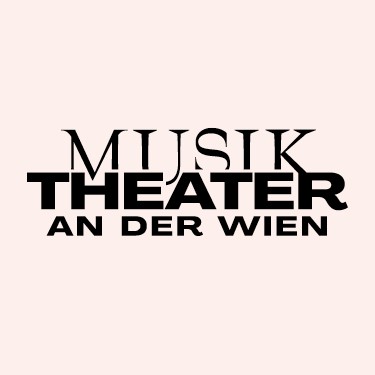
From the start of the 2022/23 season, the Norwegian opera director Stefan Herheim takes on overall responsibility for opera productions at the Theater an der Wien.
Moritz Schell.jpg)